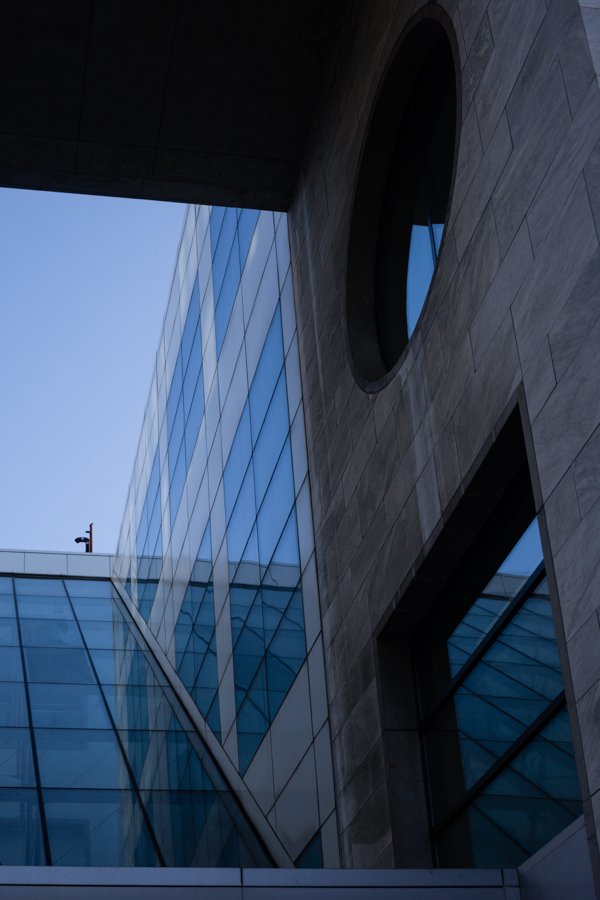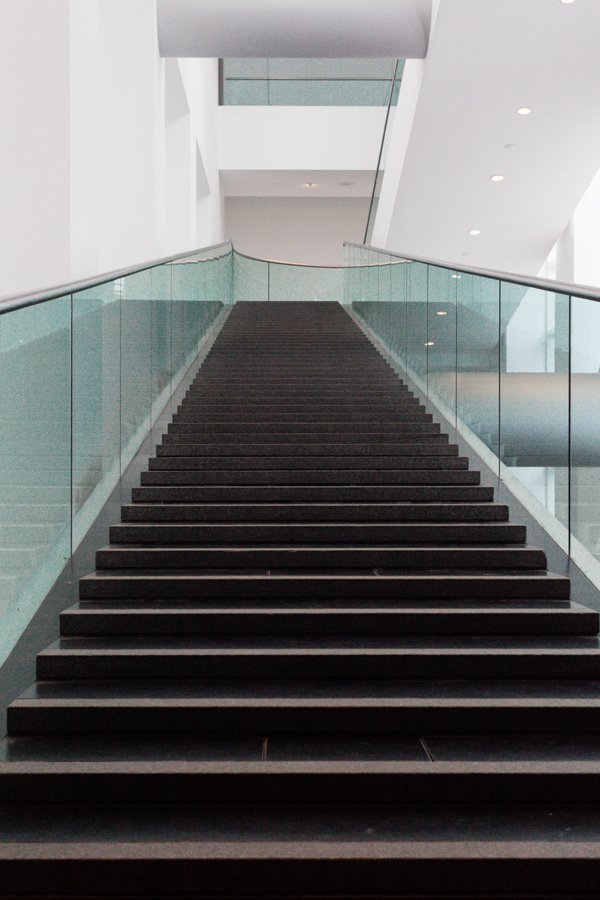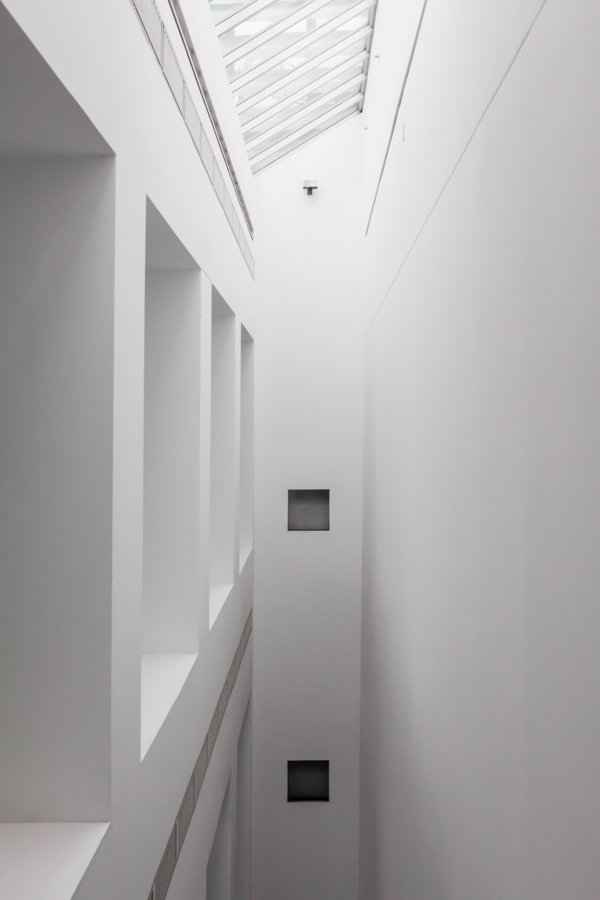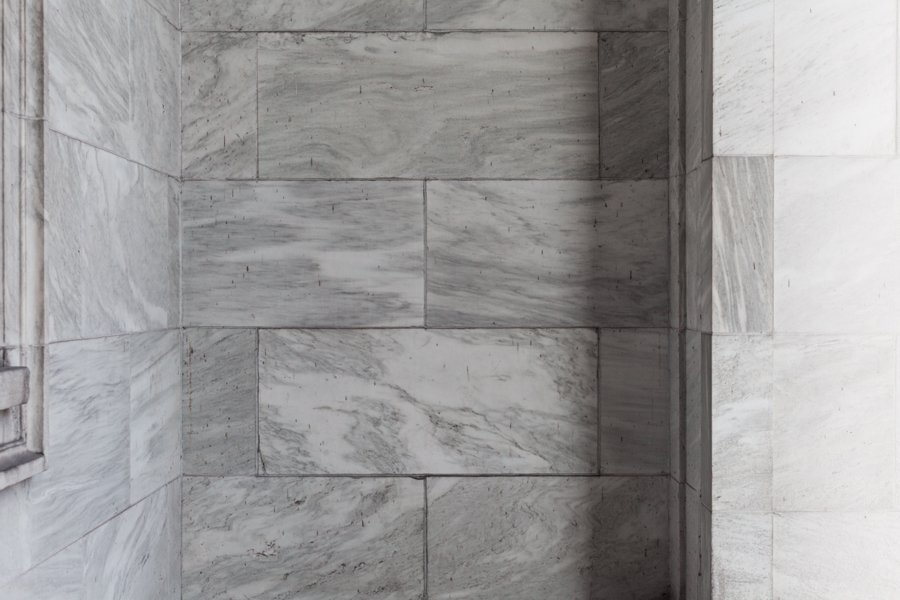A couple weeks ago I wrote about my 2014 trip to Québec, and I mentioned that it was a precursor to a trip to Montréal, which is the subject of this post. I particularly want to talk about one day when we traveled into the city center to the Museum of Fine Art.

Exterior of the newer building.
I had been to Montréal several times by then, both as a tourist and a photographer, and photos were not my priority for this section of the trip. I had already done a lot of work I was happy with in Chicago, at Niagara, and in Québec, and in Montréal I was focused more on spending time with family and friends.
I still had the camera with me, though, and I thought I might as well carry it. Rather than packing along my whole set of gear, I just grabbed my small and light 50mm lens and figured I'd photograph things if and as I saw them. In some ways it was a return to my first days of taking photography seriously, when that was the only lens I owned.
I'm not sure if it's that approach that caused a fundamental change in my architectural photography, or if it had been growing for a while and was just brought out at that moment. I've always had a fair amount of abstraction in my animal photography, and it had been creeping into other things gradually. But most of my architectural photos, even from earlier in the same trip, had been very concrete and holistic, photos like this one and this one from the Chicago portion of the trip being great examples. I still like those photos but they're all about taking a picture of buildings rather than using a part of a building for expression.

Stairway in the new building.
In Montréal things were different. Maybe it was the limitation of the single, fixed-focal-length lens. Maybe it was the limitation of being in an art museum, where the things to photograph are highly restricted when you don't want to photograph the art itself. Maybe it was just my brain clicking over after two weeks of intensive photography elsewhere.
Whatever it was, I started seeing the architecture differently. I started looking at it more as shapes to be captured in harmonious forms rather than buildings to be represented as a whole. My whole way of approaching photography began to coalesce into a more abstract perception and workflow.
Fine art museums generally aren't great places for architectural photographers. This museum had one architectural photograph in its collection, and it was reasonably good, which by itself makes it one of the better art museums I've ever been to in that context. Very little photography that isn't focused on people or landscapes is recognized as art, and I'm sure that helped motivate me to make my work more conceptual as well.

Atrium of the new building.
Like many well-tenured art museums, the Musée des Beaux-Arts features one Neoclassical building and one designed after more Modern sensibilities. (As well as, at the time, a Romanesque church and a Brutalist building; there's now a fifth building as well.) The new building was certainly well-suited to the way I was thinking that day. A lot of Modern and Contemporary architecture really rewards a more granular approach to looking at a building in ways that earlier styles may not.
Areas like this second-floor atrium to the left, whose practical purpose is only as a light shaft, catch my imagination and my sense of form very strongly in Modern buildings. Architect Moshe Safdie clearly put thought into the harmony of the shapes here in ways that have been enlightened by the work of other Modernist artists.
The original 1912 Neoclassical building had something to offer, too, though it required getting even more granular and more abstract. The benefit of an older building is that weathering often makes it more interesting to an abstractionist than it was in new construction.

Old building, portico corner.
Although I can see some earlier signs in my work of heading this way, it's clear that this day and this location were extremely significant in starting my photography moving strongly in the direction it has gone ever since. I think much more now about shape and form, detail and texture, than I do about representation. And I've found that rewarding; it has helped me develop a unique and recognizable style to my work, while also making it more fun for me to create.
The event that originally started me going to Montréal, and making friends there, is starting again this fall after a five-year hiatus. It's a city that has often inspired me creatively - maybe it's the food - and I'm looking forward to seeing what surprises it brings me this time around.
This has been an entry in the 1001 Places to Remember project by @archisteem in collaboration with Architecture and City by @photocircle.
